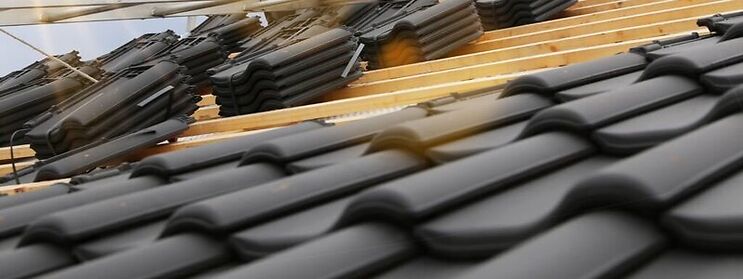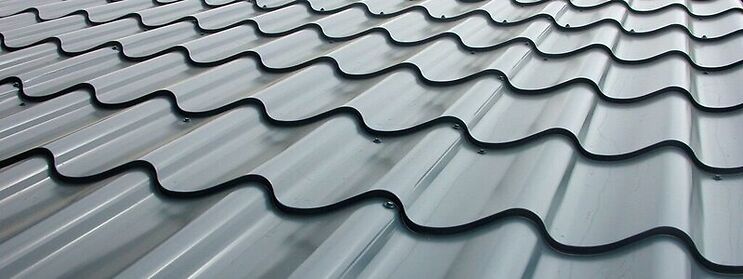Popular Roofing Materials for Australian Homes
Things you need to know about different roofing materials
There’s nothing worse than having a leaky roof. It’s not just annoying; it also causes damage to your home. And leaks aren’t only found on houses with flat roofs. They can happen anywhere, including on homes with pitched roofs says Michael from roof restoration Brisbane.
If you live in Australia, you probably know how expensive it is to replace a leaking roof. But you might need to realize that many materials are available to fix a leaky roof. There are several types of roofing materials available to Australians. Some are cheaper than others, but all will help prevent water from entering your home.
This article will cover six common roofing materials you should consider installing on your next house.
1. Asphalt shingles
Asphalt shingle roofing material is a type made from asphalt shingles. These are thin metal sheets attached to the top of a house or commercial structure. They look like traditional wood shakes but are much lighter and more robust. They’re also cheaper than wooden shake roofs, which makes them popular among homeowners.
Asphalt shingle roofing is durable and easy to install. It requires little maintenance and lasts for decades. However, it doesn’t last forever. Eventually, these roofs will need replacing. Sooner rather than later, though, since they tend to leak and rot over time. To keep your asphalt shingle roofing system working correctly, check it regularly for signs of damage. Look for cracks, missing pieces, and holes. Also, inspect the seams to ensure that they aren’t coming apart. If any of these problems occur, call a professional immediately.
2. Clay or concrete tiles
Clay or concrete tiled roof is a roofing material made from clay or concrete. These tiles are available in many different shapes and sizes and can be installed on flat roofs or pitched roofs. Clay tiles are generally lighter and cheaper than concrete tiles, but concrete tiles are stronger, provide excellent ceiling insulation, and last much longer. Both options are durable and easy to install, although installing concrete tiles requires special tools and skills.
Clay tiles are also more environmentally friendly than concrete tiles since they are energy efficient. However, concrete tiles are more expensive than clay tiles and are heavier and harder to handle during installation. Some people prefer clay tiles because they look like traditional slate tiles, but concrete tiles look cleaner and fit most modern homes.
3. Copper roofing
Copper roofing is a type of roofing material that’s made from copper sheets that are attached. These roofs are durable and attractive, and they’re ideal for homes with high temperatures since they keep heat inside the house.
Copper roofing is also great for homes that experience heavy snowfall since it keeps water away from the house. However, copper roofing isn’t recommended for homes that experience extreme climatic conditions like hurricanes or tornadoes. Since these storms can cause damage to the roof itself, homeowners may have to replace the entire roof.
4. Metal roof
Metal roofing is made of sheets of thin aluminum or steel bent and crimped together to form a flat surface. These sheets are then attached to a structure such as a house or a barn. Corrugated metal roofing provides many benefits, including durability, strength, and energy efficiency. However, these roofs can be challenging to install.
There are two different kinds of metal roofing: single-ply and double-ply. Single-ply roofing consists of only one layer of sheet metal, whereas double-ply roofing includes two layers. Double-ply roofing is generally stronger and lasts longer than single-ply roofing. Both roofing types are available in various colors and styles, and they can be installed quickly and easily.
5. Membrane roofing
Membrane roofing is a type of roofing system that uses a waterproof layer of plastic film to cover the top of a structure. These roofs are designed to last decades without any maintenance and are highly durable. However, they require specialized installation techniques and may cost more than traditional roofing options. Membranes are available in different colors and styles and can be installed on flat surfaces like rooftops or sloped areas like valleys.
Some membranes are explicitly made for commercial buildings, while others are suitable for residential applications. There are many benefits to choosing membrane roofing, such as lower energy consumption, reduced water runoff, and improved air circulation as it has roof spaces. Membrane roofs are also easy to repair, which makes them ideal for businesses that experience frequent damage.
6. Slate shingles
Shingles are a type of roofing material made of thin metal sheets attached to the top of a roof. Many kinds of shingles are available, ranging from traditional asphalt to fiberglass shingles and wood shakes.
Slate shingles are another option, and they’re becoming increasingly popular due to their durability and low maintenance requirements. Slate shingles look great, and they’re easy to install. They’re also fire resistant, which makes them ideal for areas prone to wildfires. Slate shingles are costly, however, so homeowners should consider their options carefully before choosing them.
FAQs
How can I know if I have a roof leak?
If you suspect that you have a roof leak, you should call a professional right away. Many different signs could indicate a problem, such as a wet spot on the ceiling or walls, dripping faucets, or strange smells from inside your house. However, these symptoms are only sometimes easy to notice once it’s too late. To avoid having a significant issue like mold growing in your attic, you should contact a professional to inspect your roof for any problems.
Should I get a new roof before I sell my home?
If you live in a region prone to heavy rain, hail storms, snowstorms, etc., you should consider getting a roof replacement before selling your home. Not only will it improve the appearance of your home, but it will also protect your property against damage caused by different Australian climates. However, it would be best if you didn’t rush into buying a new roof without considering the costs involved. There are many factors to consider, such as the cost of materials, labor, and installation. Also, wait until springtime to install a new roof since you’ll see the best material deals.
How do I find a roofing contractor I can trust?
Finding a good roofing contractor can be challenging. When choosing a roofing contractor, there are many factors to consider, such as experience, reputation, reviews, insurance, licensing, and more. However, one of the best ways to ensure that you hire a reputable roofing contractor is to ask around. Word of mouth is always the best recommendation, but asking friends and family members for recommendations is another great option. Ask your neighbors, coworkers, and anyone who knows about roofing repairs or replacements.
Remember to check online too! They are great resources for finding local businesses. Once you’ve narrowed your list, call the top few candidates and ask them to send you references. Make sure you follow up with these references and ask them if they have had any problems with the contractor. Also, look for signs of shoddy workmanship. If you see any issues, contact the contractor immediately and let them fix them.
Conclusion
In conclusion, if you live in Australia, you have a lot to look forward to when it comes to roofing materials. A wide range of roofs is available, from traditional asphalt shingle roofs to metal roofs and tile roofs. Each type has its advantages and disadvantages, but whichever kind of roof you choose, you’ll find your preferred roofing material that will last for years.


